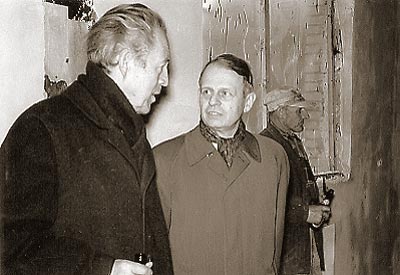By setting up "The Medical Reading Room in Aarhus" (1898) and establishing the Jutland Medical Society (1913), the hospital doctors in Aarhus had already paved the way for creating a medical community in the city that could form a basis for a university, and several of the proposals for the establishment of a university were built upon this groundwork. As early as 1902, a Copenhagen bacteriologist came forward with a proposal for setting up a "school for doctors" in Aarhus as the first step towards a university. Briefly, the plan involved allowing medical students in the second half of their studies at Copenhagen University to undertake their clinical education in hospitals in Aarhus. For a number of reasons nothing came of the proposal, but it did provide the impetus for a later plan, launched in 1926, involving relatively inexpensive clinical practice education as the spearhead for the eventual establishment of a university. The Ministry of Education did not take a negative view of the plan, but along with a number of other factors, a change of government prevented this plan from coming to fruition.
As far back as 1911 "Holiday Courses for Mature Medical Students" had been held in Aarhus. Each year in June, a dozen medical students from Copenhagen University would come to Aarhus and participate in courses at the hospitals and clinics. The courses covered internal medicine, surgery, obstetrics, forensic medicine, radiology, community medicine, as well as eye and ear illnesses, and they proved to be so popular that from 1924 they were also held in January. Professor Richard Malmros, dr.med. (1905-2000), many years later recalled his own participation in a summer course in 1930, stating that the great attraction had been the opportunity of revising the entire examination syllabus in just one month.
The fact that they had to be pragmatic and make do with a handful of arts subjects when the university first opened in 1928 was the source of some disappointment amongst the medical directors who had been in the front line of the battle for a university in Aarhus, but they acknowledged that, in the circumstances, this was the only way to get a university off the ground, and from here it could be built up step by step. One of these steps was provided by the 1931 University Act, which gave the green light for the first new university building. That which was to be equipped first and foremost for medical teaching.
In 1933 the Faculty of Medicine, as it was then called, began its first Introductory Year teaching in foundation medical subjects. The faculty, which was formally constituted in 1935, achieved full status in 1953. During the period from 1933 to 1953 students had been gradually able to take more and more of the course examinations within the faculty, but it only first became possible to also take the final examinations in Aarhus in 1953. The first defence of a thesis in the faculty occurred in 1952, at which time no less than 42% of the university's total of 1,750 students were registered within the Faculty of Medicine.
At the start of the 1950's, an exploration of cell membranes was conducted in the Department of Physiology; many years later, in 1997, this led to Jens Chr. Skou, dr.med., receiving the Nobel Prize for Chemistry for his discovery of The Sodium-Potassium Pump.
In 1992 the Faculty of Medicine was merged with the previously independent higher education establishment, Aarhus Dental High School, whereupon the faculty changed its name to Faculty of Health Sciences. In 2000 the Health Sciences Library and Teaching Centre was established in the former Jutland State Maternity Home. The home was then renamed as the Victor Albeck Building, after the maternity home's first medical director, who is particularly remembered for his role as a university campaigner and founder. Victor Albeck (1869-1933) was chairman of the University Association from 1926 to 1933 and chairman of the University Board from 1928 to 1933.
A close relationship has existed with all the city's hospitals throughout the years. Not only clinical teaching, but research also is undertaken on a major scale within the walls of the University Hospital. At the beginning of a new millennium, researchers in the faculty's bio- and community medicine departments, together with the clinical departments at Aarhus University Hospital, are publishing more than 1,000 academic articles per year.
A History of Medicine collection found a home in the medical director's residence at the maternity home in 1983, which functioned as the History of Medicine Museum until the beginning of the 1990's when the collection was moved into the Steno Museum.
 When the departmental building shared by Physiology and Biochemistry became too cramped, a new Department of Biochemistry was built in the 1960's. At the 'topping-out' ceremony on the 20th March 1965 are the university architect C F Møller (left), and the rector, Erling Hammershaimb. (Photo: Carl Zimmermann-Nielsen. University History Committee).
|